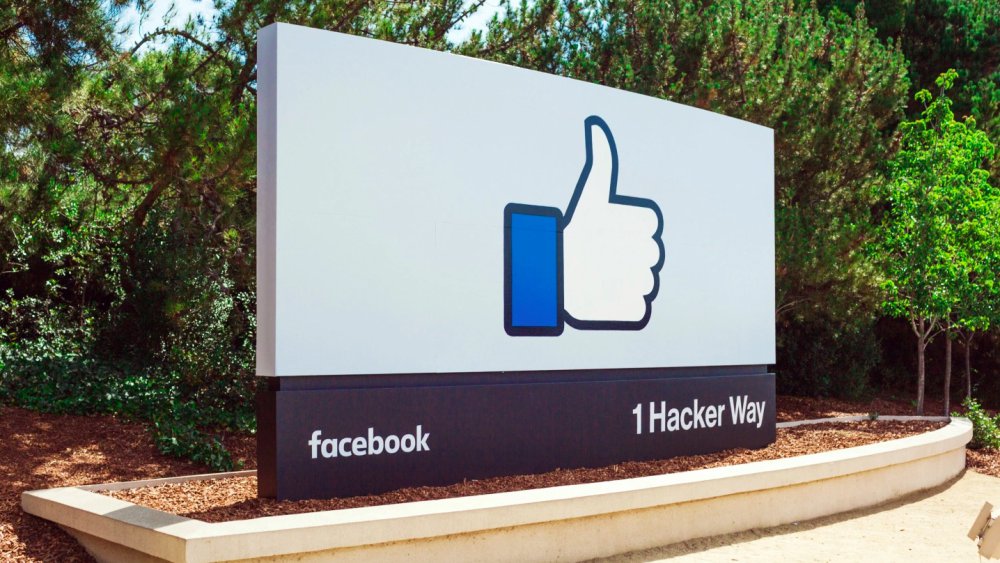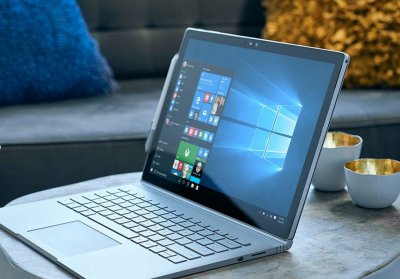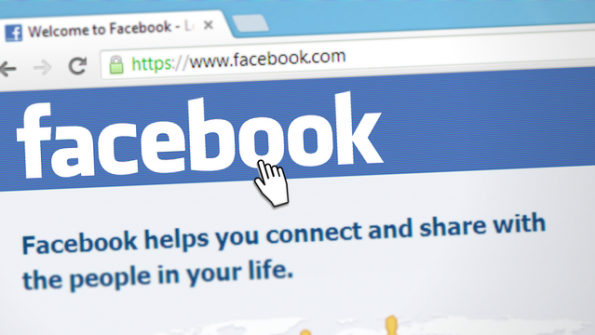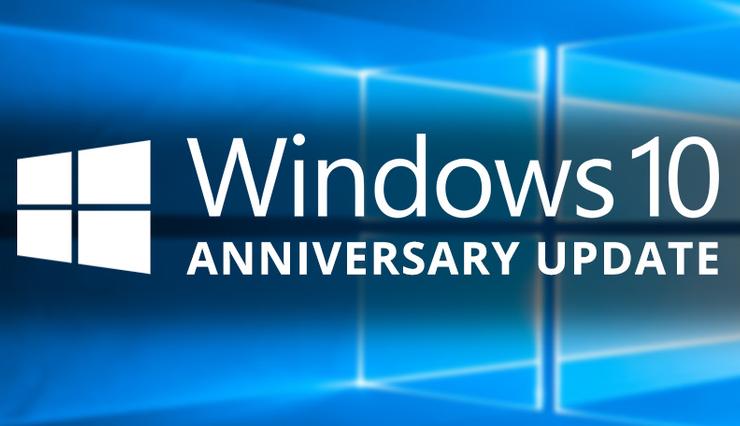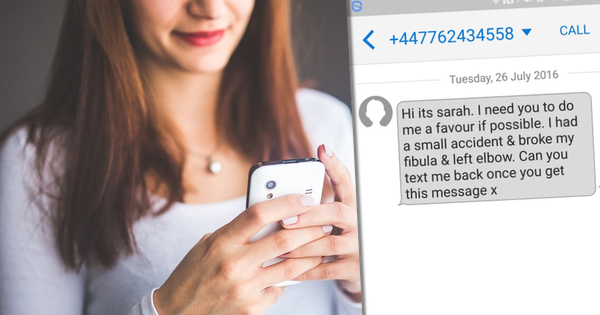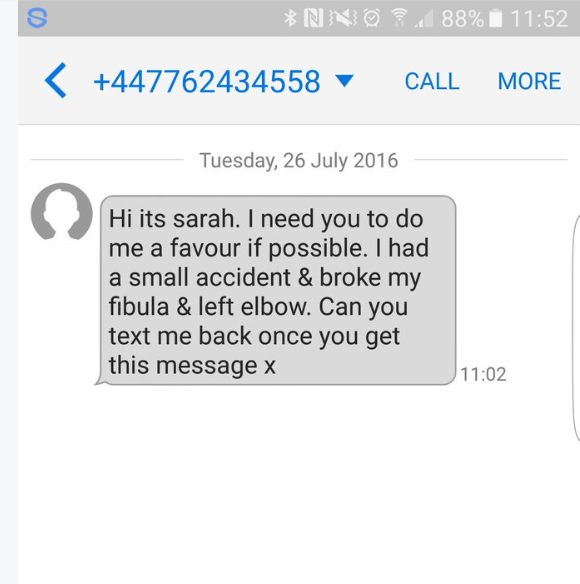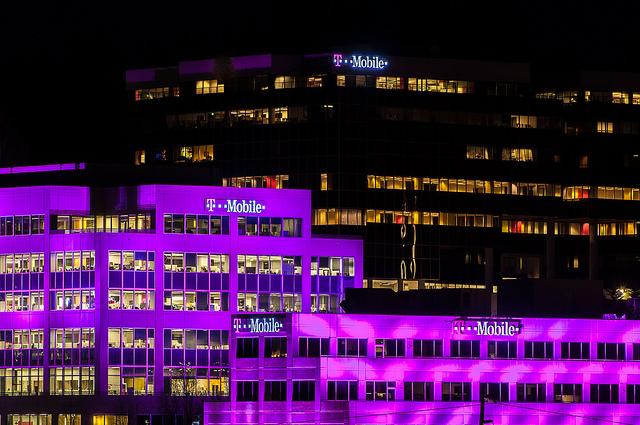-
Posts
7,282 -
Joined
-
Last visited
-
Days Won
2,416
Content Type
Forums
Blogs
Events
Resources
Downloads
Gallery
Store
Everything posted by allheart55 Cindy E
-
Here’s the latest in a growing list of post-AU update complaints. In addition to reports of AU killing digital cameras worldwide, apparently if you simply plug your Kindle eReader (Paperwhite, Voyage - doesn’t matter which edition) into a USB port, Windows 10 with the Anniversary Update will crash and bluescreen. The problem was first reported shortly after AU started delivering, but even more recent reports show that the issue is ongoing. I’m reaching out today about this problem and will keep you apprised, but it reminds me of that old joke: Patient: “Doc, when I hold my arm this way it hurts.” Doc: “Don’t hold your arm that way.” Source: winsupersite
-
- complaints
- kindle
-
(and 2 more)
Tagged with:
-
Teens React To Windows 95.
-
reworked its code to circumvent ad-blockers, couching it to users as an educational move. Because they give you tools to manage your experience (within their boundaries), Facebook said, you wouldn’t need your pesky little ad-blocker anymore! Ad-blocking companies responded swiftly and predictably: within 48 hours, they announced a work-around and had it up and ready for users to implement. And so the arms race continues. Of course, the game of cat-and-mouse coding can (and probably will) continue infinitely. So the biggest tool in Facebook’s toolbox is this: to make you not want to block their ads at all. And to that end, they’re continuing their campaign of relentlessly optimistic education, to teach 1.7 billion people how great it is to be selectively advertised to. Facebook’s new, updated ad education portal basically gives users a high-level rundown of the data points that Facebook assembles and then sells to advertisers in order to make you a target. These include things you do on Facebook, like… Pages you like Pages your friends like Information from your profile (age, affiliations) Places you check in Places your friends check you in Facebook, however, also has a huge, robust network of ways it cam track you across the web and on your phone. So it can also make judgements about you based on, for example: Pages you’ve viewed on any device Other apps you’ve got on your phone Places your devices have been online Purchases you’ve made online Purchases you’ve made offline Information about you from loyalty/rewards programs The full list of data points Facebook can assemble, across the entire internet and every device you use on it is, frankly, huge. The Washington Post threw together a list of 98 such points, which is far from comprehensive but begins to give you the idea. You can view your own ad preferences to see what it is Facebook thinks will interest you, and you can clear them out as often as you want. (Like Prometheus‘s liver, they will regenerate based on your continuing activity online and off.) As you view them, Facebook will tell you why it thinks they interest you. Some will be on target: That yours truly should appear to have an interest in “Consumerist” based on internet activity is, well, to be expected. Likewise for “history,” which is in my profile as my undergraduate major. Others, not so much, as we’ve seen amongst ourselves and from readers. Perhaps you are one of the 56 million people apparently interested in “Delaware’s At-Large Congressional District”? (Delaware, overall, has just under one million residents.) Likewise, when you see an ad on Facebook, you can click the little X in the upper right-hand corner to see how you were chosen for that ad. Some of these are, again, more targeted and more informative than others. For example, on my work computer this morning Facebook showed me ads for AT&T small business services, and said about it: You can also choose, on an individual basis, to opt out of certain business affiliations and displayed ads. However, realistically, there is almost nothing you can do to opt out of being part of Facebook’s ad machine. Everything you block is only a thing you no longer see, not a thing you no longer get tracked by. Even if you do not have a Facebook account and do not use the app or website on any device, they’re still using their tracking tech on you online. Unless you live off the grid in a cave and use only cash, you are part of this network. And that’s why, although Facebook would really prefer you embrace that fact, it doesn’t even matter to them that much if you don’t. They’re already there. Source: consumerist[/url]
-
- ads
- advertising
-
(and 2 more)
Tagged with:
-
-
The Electronic Frontier Foundation has slammed Microsoft for its "blatant disregard" for user privacy with Windows 10 and has called on the company to formally acknowledge that its update program was flawed. In a damning editorial published on 17 August, EFF staff member Amul Kalia blasts Microsoft for misguiding users as part of its attempt to push Windows 10 to machines and calls attention to the "unprecedented" volume of user data it collects. This includes location data, text input, voice input, touch input, webpages visited and telemetry data regarding how customers use their computer. Kalia claims Microsoft gathers this information without giving users the tools to properly opt-out and provides no explanation as to how it anonymizes user data, nor how long it stores it for. He also accuses Microsoft of providing a "false choice" to customers by claiming that users are putting their security at risk if they lower data-sharing settings on Windows 10. "Windows 10 sends an unprecedented amount of usage data back to Microsoft, particularly if users opt in to 'personalize' the software using the OS assistant called Cortana," says Kalia. In France, Microsoft has been threatened with legal action for collecting excessive amounts of data and bombarding customers with ads. Kalia points out that while some of Cortana's awareness features can be disabled, this doesn't necessarily stop the computer sending usage data back to Microsoft's servers. The company's reasoning behind this is sketchy at best. "Microsoft has tried to explain this lack of choice by saying that Windows Update won't function properly on copies of the operating system with telemetry reporting turned to its lowest level... But this is a false choice that is entirely of Microsoft's own creation," explains Kalia. "There's no good reason why the types of data Microsoft collects at each telemetry level couldn't be adjusted so that even at the lowest level of telemetry collection, users could still benefit from Windows Update and secure their machines from vulnerabilities, without having to send back things like app usage data or unique IDs like an IMEI number." Customers choose between privacy and security Kalia adds that because of Microsoft's pushy tactics with Windows 10, which saw the company attempt to bury the OS inside of security updates, some users have stopped downloading security patches altogether, leaving them at risk. He concludes that Microsoft has forced users to choose between privacy and security with Windows 10, and calls on the company to address its mistakes by offering customers straightforward, corrective measures. "Microsoft should come clean with its user community," says Kalia. "The company needs to acknowledge its missteps and offer real, meaningful opt-outs to the users who want them, preferably in a single unified screen. It also needs to be straightforward in separating security updates from operating system upgrades going forward, and not try to bypass user choice and privacy expectations. "We urge Microsoft to listen to these concerns and incorporate this feedback into the next release of its operating system. Otherwise, Microsoft may find that it has inadvertently discovered just how far it can push its users before they abandon a once-trusted company for a better, more privacy-protective solution." Source: ibtimes
-
- 1
-

-
- blatant disregard
- microsoft
-
(and 1 more)
Tagged with:
-
-
It's great, isn't it? If you type an address into the search bar, it brings it up immediately.
- 6 replies
-
- 1
-

-
- free
- google earth pro
-
(and 2 more)
Tagged with:
-
Veteran anti-virus researcher Vesselin Bontchev has discovered that there are thousands of samples of malware available for download from the WikiLeaks website. The malware found by Bontchev is found in a large tranche of emails leaked from AKP, a Turkish political party. Bontchev writes: Since many of the AKP members have been recipients of malware sent by e-mail (most likely random spam but could have also been targeted attacks), the received malware in the e-mails is also present in the dump. As a result, the Wikileaks site is hosting malware. For the record, I consider this to be extremely irresponsible from the part of Wikileaks. Malware distribution is not "journalism" by any definition of the term. Bontchev found 3277 malicious files on the WikiLeaks site, accessible to anyone on the internet via a single click. Of course, it's perfectly possible that the true number of malware samples published on the WikiLeaks site is much larger than this. Bontchev's focus so far has been on one particular email dump, and used the VirusTotal service to determine if a file was identified as malicious or not. Furthermore, one cannot discount the possibility that some of the email dumps published by WikiLeaks contain targeted attacks that are not presently detected by any anti-virus product. WikiLeaks has been criticised before for its unwillingness to curate the leaked information that it leaks - by, amongst others, no less than Edward Snowden. Anti-virus industry old-timers like me and Bontchev are left with our heads in our hands when we hear that WikiLeaks is apparently making no efforts whatsoever to prevent its readers from encountering malware samples. Source: Graham Cluley
-
- anti-virus
- malware
-
(and 2 more)
Tagged with:
-
-
This past weekend my wife's Facebook page got spoofed. We learned what was happening as her phone started a constant stream of alerts from family and friends with messages saying they had just received new friend requests from her. While many thought she had been hacked, in other words someone accessing her Facebook account, it was actually a spoofing attempt which is quite common on Facebook unfortunately and it happens much to often. Here is what occurs: - A Spoofer grabs the profile header image and profile picture from a Facebook account via the web and of course the users name as it appears on the original Facebook profile page. - They then create a new profile using that information and the copied images. - Next they go back to the original profile while they are logged into Facebook using the spoofed profile. They click on the original users Friends List and start sending friend requests to as many as possible. What happens next is that those friends get a request for friendship from what looks like a friends profile. Just like on this past Saturday some of my wife's friends questioned the unexpected friend request and others accepted it immediately. Eventually, If the spoofed profile never gets noticed as a fake, the person behind the spoofing will start sending messages to your friends who accepted the request. By gaining the confidence of those individuals they can now ask for money because of an accident, family situation, etc. and who among us would not assist a family member or friend in need. The reason this type of a scam/spoofing is so easy to accomplish is because your Friends List on Facebook is public by default. If you happen to run Facebook's Privacy Checkup the accessibility of your Friends List is not even part of that wizard. You would think since access to this Friends List is a tool of spoofers it would show up there but unfortunately, there is no means to restrict access to that list unless you know it needs to be done and where do make that change. Well, I am here to show you exactly how to restrict access to your friends list on Facebook. To get started you need to go to your main Facebook profile page. On your profile you will see options under your main profile header image and you need to select Friends (1). When the Friends tab is open you will now see a pen/pencil icon (2) on the right side of the Friends List. Click on that to see the Edit Privacy (3) option and select that to gain access to the Friends List privacy settings. As you can see there are two privacy areas that can be controlled from here. Friend List is self explanatory as it is basically all of the people you have accept as friends on Facebook. Following are those pages and people, such as products and maybe celebrities, that you have selected to follow on Facebook and get their updates in your Timeline. There are five basic options available that will be of use to most people: Public - Facebook default setting and allows anyone to see who you are friends with. Friends - Makes the list only visible to those you have accepted friend requests from and their acquaintances. Friends except Acquaintances - This only allows your friends to see your list of friends - anyone who is marked as an Acquaintance on their list will not have access to your Friends List. Only Me - my recommended setting as it means only you can see your Friends List. Custom - allows you to share with specific individuals or lists (pages, events, products, celebrities, etc.). More Options - allows you to share your Friends List with specific groups of individuals you have previously marked in a certain category. My recommendation is to use the Only Me option as that fully protects your Friends List from everyone. So what should you do if your Facebook account does get spoofed? Browse to that fake profile while you are logged intro your own Facebook account and from the main profile page look for the ellipsis menu item to the right of the Message button in the lower right corner of the profile image. By selecting that ellipsis menu you will get a drop down with an option to Report this profile. A couple of my wife's friends did this once we realized she was being spoofed and within 10 minutes Facebook had removed the spoofed profile. I hope this process helps you all better protect your own accounts and Friends but do not forget to take advantage of Two Factor Authentication on Facebook to protect your account from actual improper access. While that would not have stopped a spoofer it will certainly help if someone attempts to actually hack into your Facebook account. Source: winsupersite
-
I just downloaded and installed it. It's pretty neat.
- 6 replies
-
- free
- google earth pro
-
(and 2 more)
Tagged with:
-
Google Earth Pro used to cost a staggering $400 a year, but in case you haven’t heard, the intuitive mapping program is now free. Google announced the change back in 2015, but the company’s instructions have since become outdated. Thankfully, the process remains relatively straightforward and quick. The Pro package will be familiar to anyone who has used Google Earth before, but the software comes loaded with a host of extra features. Media companies use the video export feature to supplement reporting, and construction firms can use the tools to digitally survey any location on Earth. Here’s how to get these and other previously expensive features for free, whether you’re an Apple or Windows aficionado. Step 1 — Download Google Earth Pro To get started, we’ll need to download and install Google Earth Pro. Head to the Google Earth homepage, click the Explore option beneath Google Earth Pro, and click the blue Download Google Earth Pro button on the right-hand side of the page. In Windows, simply open the .EXE file installer and allow it install the latest version of Google Earth. On a Mac, you’ll need to open a DMG file, then run a PKG installer. You can customize where the application will install, but the defaults are fine if you’re not sure which settings to use. Step 2 — Sign in with your email and this password The first time you start up Google Earth Pro, you’ll be asked for an email and License Key. To use Google Earth Pro, you need only use your email address with the License Key “GEPFREE.” Like this– Do that and you’ll be using Google Earth Pro in no time. To keep things simple, go ahead and check the box beside Enable automatic login. If you do, you won’t have to remember the key next time you fire up the software. Keep in mind that Google Earth users can also sign in using their Google account. This gives you access to any content you’ve created in Google Earth in the past, as well as your search history. Signing in with a Google Account does not affect your license key, so don’t be afraid to do so. Enjoy Google Earth Pro features, free of charge Google Earth Pro comes with an array of beneficial features, many of which can help facilitate otherwise difficult tasks. Below are just a few of the more advanced things you can do with Google’s virtual globe. Calculate the distance between two points Quickly measure the area of a particular area Find out how tall towers or hills are Export images up to 4,800 x 3,200 pixels in size Import spreadsheets full of data for overlays Record and export 3D footage in full HD, or 1,920 by 1,080 pixels in size There’s a lot more than just that, too, as evidenced from the video above. The footage is from 2010, so it’s a little old, but it gives you a great idea of the kinds of things Google Earth Pro can do that the other version of Google Earth cannot. Some features have been dropped — Google removed the demographics and traffic overlays in the beginning of 2016, for instance — but there’s no reason to install Google Earth instead of Google Earth Pro at this point. Enjoy the extra features, even if they’re shrinking. Source: Yahoo Tech
- 6 replies
-
- free
- google earth pro
-
(and 2 more)
Tagged with:
-
-
Having some trouble with your webcam? You're not alone. If you're a Windows 10 user who recently installed Microsoft's big Anniversary Update for the operating system, the update has rendered a number of different webcams inoperable. Microsoft representatives have indicated that a fix should be coming in September, and clever Windows users who don't want to wait for Microsoft's update are already trying workarounds to get past the issue. "Windows 10 continues to have the highest customer satisfaction of any version of Windows. We have seen a small number of reports of unexpected behaviors following the Windows 10 Anniversary Update. Engineering and customer support are investigating these on a case by case basis and offering trouble-shooting tips as necessary. If a customer has any issues, we offer customer support at www.microsoft.com/support," reads a statement Microsoft provided to Gizmodo. The problem centers on Microsoft's decision to prevent webcams from using MJPEG- and H264-encoded streams with Microsoft's new Windows Camera Frame Server. Said server allows multiple applications to access the camera stream—a change in the Windows 10 Anniversary Update—but Microsoft decided that this Frame Server should only receive an uncompressed YUY2 stream from your webcam. So, any webcam that's attempting to use one of the two forbidden codecs will now hang, freeze, or generally not work. Microsoft's intent was to find the best solution that keeps one's webcam available to apps like Windows Hello and Cortana without having multiple applications decode the same webcam stream simultaneously (which seems inefficient, as Ars Technica notes). "...MJPEG and H.264 being decoded / filtered out is the result of a set of features we needed to implement, and this behavior was planned, designed, tested, and flighted out to our partners and Windows Insiders around the end of January of this year. We worked with partners to make sure their applications continued to function throughout this change, but we have done a poor job communicating this change out to you guys. We dropped the ball on that front, so I'd like to offer my apologies to you all. We're working on getting better documentation out, to help answer any questions you may have," reads a post in Microsoft's Support Forums from Windows Camera Team member "Mike M." Microsoft is planning to first fix the issue for the MJPEG codec, but it might need some extra time to try out a fix for H.264 with its various Windows Insider testers. "Since it will take some extra time for the H.264 work to go through this additional layer of testing, and we would prefer not to delay the MJPEG changes, we will ship these two separately. You can expect the MJPEG media type work to reach you first," reads Mike M's post. If you don't want to wait, you can also try out a fix proposed by software engineer Rafael Rivera. Source: PC Mag
-
- anniversary update
- webcam
-
(and 1 more)
Tagged with:
-
The Windows 10 free upgrade period has now closed, so how will Microsoft MSFT +0.00% get more Windows 7 and Windows 8 users to adopt it? Now we know: take away user control and make both operating systems behave like Windows 10… In a new blog post entitled ‘Further simplifying servicing models for Windows 7 and Windows 8.1’, Microsoft’s Senior Product Marketing Manager Nathan Mercer explained: “From October 2016 onwards, Windows will release a single Monthly Rollup that addresses both security issues and reliability issues in a single update. The Monthly Rollup will be published to Windows Update (WU), WSUS, SCCM, and the Microsoft Update Catalog. Each month’s rollup will supersede the previous month’s rollup, so there will always be only one update required for your Windows PCs to get current.” Windows 7 and Windows 8 Home users will soon get no choice over what updates Microsoft installs, just like Windows 10. Image credit: Microsoft Spelling this out to one commenter who asked: “Does this mean the individual patches will still be available and one can opt to either do individual patches or the Rollup model?”, Mercer replied: “Individual patches will no longer be available after October 2016.” This is much like the controversial system which has been criticized in Windows 10. Windows 7 and Windows 8 users will now only have two choices: stop updating completely and leave your computers vulnerable to security holes or accept everything single thing Microsoft sends you whether you want it or not. Windows 10 avoidance now looks pointless for Windows 7 and Windows 8 owners. Image credit: Microsoft Administrators for Window 7 and Windows 8 Pro and Enterprise editions attached to an update server will get a few more options as they can independently manage whether security or feature-based rollups are installed, but Home users are out of luck. As Woody Leonhard at InfoWorld neatly surmises: “In this brave new world, one has to wonder if it’s worth the effort to fight Windows 10. Microsoft is removing two of the great distinguishing features of Win7/8.1 — granularity of updates and the ability to control them — while opening Win7 and 8.1 to the same snooping features that are in Win10. Is resistance futile?” It’s a very good point. Especially given those users (more than one billion at last count) who made the effort to resist the continual and often sneaky attempts by Microsoft to push them to Windows 10, presumably did so because they preferred how their OSes operated. Well not anymore. From October Windows 7 and Windows 8 will operate just like Windows 10 with the added downside that they are older. So users might as well upgrade…except when they try to do so they will find Windows 10 is no longer free. Yes, as devilishly clever plans go this has to be one of Microsoft’s best. Source: Forbes
-
- monthly rollup
- upgrade period
-
(and 2 more)
Tagged with:
-
It’s always a nerve-wracking moment when your payment card is declined — you know the feeling: your pulse races as images of negative account balances dance in front of your eyes. But one Burger King customer in the United Kingdom had to suffer through that feeling not because she couldn’t afford to pay for her meal, but because the cashier tried to overcharge her… by more than $12,000. The woman was with her son and daughter at London’s Luton Airport this week, and had ordered a Whopper Steakhouse burger, regular fries, regular soda, and two portions of chili bites, reports The Sun, for a total of £9.47 ($12.38 U.S. for those Americans playing at home) for the meal. But when she gave the cashier her card, she was told it was declined, forcing her to scrounge up some cash from her two adult children. She didn’t realize what had happened until she got home and took a look at the scrunched up receipt from the first attempted transaction — and saw that the cashier had attempted to charge her £9,471.96 ($12,384.40). “I went ice cold,” she said, and called her bank. She was told the charge had immediately been declined because it was abnormally large. “But it rings alarm bells – if it was, say, £74, it would’ve gone through,” she says, adding that she’s learned to check the bill when she pays regardless, and to use the chip-and-pin system to verify the amount she’s being charged. DON’T KEEP THE CHANGE Mum charged £9,000 for a meal with her kids at Burger King in Luton Airport [The Sun]
-
- burger king
- declined
-
(and 1 more)
Tagged with:
-
-
I pay $97.00 a month for unlimited text, talk and data on two lines so this will be much more expensive for me as well.
- 2 replies
-
- data plans
- t-mobile
-
(and 2 more)
Tagged with:
-

Large Backup file on other disk?
allheart55 Cindy E replied to mikehende's topic in Tech Help and Discussions
It sounds like it. Can't you ask the owner? -
-
Fraudsters have embraced a new low by designing an SMS-based scam campaign that preys upon parents' worst fears. ActionFraud, the United Kingdom's national fraud and computer crime reporting center, reports that in one version of the scam, targets receive an SMS message from someone purporting to be their child. That individual then goes on to say they're in the hospital, they can only communicate via text, and they need the target to do them a favor. As quoted by in an ActionFraud blog post, the message reads: "Mum i did try and phone from some else phone signal is really bad, there has been a terrible car accident. I’m in the ICU ward in hospital my phone ain’t switching on and needs charging. I’m on this mobile number please make sure you reply to this number, my friend didn’t make it he died before we got to hospital and his sister’s fighting for her life. Mum i had my seatbelt on, i’ve got a head injury but i’m ok. Going into Xray to be seen, please make sure you message me back and don’t phone cause mobile phones aren’t allowed here so please text in case I’m in there. I will go outside and phone you mum its really bad i need you to do me favour before it’s too late, as soon as you get my text please reply by text i need you to do me a favour mum, time is running out and i need you to do something mum." That's more than enough to throw most parents into a state of panic. Other versions are a bit simpler. One comes from someone named "Sarah" who says they've been in a small accident and broken a few bones. Once again, they ask for the recipient to respond via text. If the recipient does reply, they receive a message from the sender asking them to purchase a mobile phone top-up code and text it back to them. Compliance with those demands enables the scammer to credit the cash to their mobile phone account. Numerous people have fallen victim to this scam, including one individual who lost £20 after responding to a text sent from the mobile number 07762 434558. As they explain in a post to Who Called: "Got scammed £20 by this number today. I received the same texts regarding Sarah and the broken fibula and elbow. I have a relative named Sarah so spent the afternoon calling and visiting hospitals having believed the messages. Do not answer!" Whether to make a few bucks or steal your login credentials, fraudsters have plenty of reasons to send you scam SMS messages. With that in mind, users should always err on the side of caution when they receive any message - especially one that is urgent - from a number they don't know. In the case of this scam, if a parent is ever in doubt, they should contact their child's phone directly and make sure they're okay. Source: Graham Cluley
- 2 replies
-
- fraudsters
- new low
-
(and 1 more)
Tagged with:
-
T-Mobile has spent the years since its failed acquisition by AT&T building its LTE network and launching new phases of its “UnCarrier” initiative. Today, the provider that started the industry trend away from contracts and handset subsidies is also getting rid of mobile data plans. From here out, it will offer one postpaid option: unlimited voice, data, and text. The change grew out of the Binge On zero-rating service that the company started last year, after seeing how much streaming video and music that customers were happy to gobble up when it didn’t count against their data allotment. Under the new plans, the compression that comes with Binge On will be the default, and customers can pay an additional $25 per month if they want high-definition video streaming. T-Mo says 99% of customers that request Binge On have kept the service, since most people find that they don’t need high-definition video on a tiny smartphone screen. Other upcharges will include 5 GB of mobile hotspot data for users who tether their phones for $15 per line per month, and unlimited calling to 30 countries for $15 per line per month. Roaming to countries that aren’t Andorra is already included. The pricing for the plans is one line for $70 per month, two lines for a total of $120 per month, and additional lines for $20 each up through a total of 8 lines. “Our postpaid business is family plans,” Legere noted, asserting that the real price per line is $40 per month, not $70, since that’s how most customers will sign up for these plans. The company knows that most of its customers are on family plans, and the price point that you’ll likely hear advertised will be $40 per line, since that will be the price for a family with four smartphones. That is different from “Dumb, Dumber, and Yellow,” as the leather jacket-clad CEO calls his competitors, which have been backing away from unlimited plans, charging customers extra or requiring them to sign up for satellite TV service if they want unlimited data. “I can tell you what Sprint’s working on now,” Legere said in response to a reporter’s question that was not actually about Sprint. during this morning’s conference call. “It’s whatever we’re working on now, just add six months. It’s called copy-paste.” (Update: Sprint announced its own unlimited plans about an hour later.) https://www.youtube.com/watch?v=L-RW9Q7zl1E If you don’t like the compression of content that came with the Binge On zero-rating service, there’s a $25 charge that you can pay and get high-definition streaming. Source: consumerist
- 2 replies
-
- data plans
- t-mobile
-
(and 2 more)
Tagged with:
-

Large Backup file on other disk?
allheart55 Cindy E replied to mikehende's topic in Tech Help and Discussions
You usually see that when you are trying to access files on a network or when a third party program has created image files. It sounds like it could be image files, possibly from the Acer machine that you are working on. -
-
Space on your Android phone is for sale, if you’re a Verizon customer, and according to ad agency executives who have worked on such deals. Verizon activates an estimated 20 million new Android phones every year, so even a small amount per installation could add up for the mobile company, assuming that customers would tolerate it. Would they? AdAge shared this information based on discussions with advertising executives, who weren’t identified for obvious reasons. Verizon reportedly began shopping the idea around in late 2015, but wouldn’t comment on whether any brands took them up on it. The price being offered was about $1 or $2 per customer, which is apparently a good price compared to other programs that pay people to install apps. Only Android users’ phones were for sale, since Apple exerts more control over what can be installed on their phones. “If the app doesn’t offer valuable content and experiences, you’re going to deal with a lot of frustrated users calling out your bloatware,” one ad executive said in criticizing the practice of pre-installing apps in general. AdAge, for its part, suggested calling these installations “brandware,” which is about right. The goal is to get brands in front of as many people as possible, some of whom might open the app. Traditional phone bloatware is offerings from the carrier that a customer generally might not want. Here’s an alternate idea for Verizon: ask customers to kick in an extra five or ten bucks to ensure that your phone doesn’t have any paid apps on it, much like how Amazon sells Kindles without “special offers” for an extra fee? Verizon Offered to Install Marketers’ Apps Directly on Subscribers’ Phones [AdAge]
-
- adage
- android phone
-
(and 2 more)
Tagged with:


